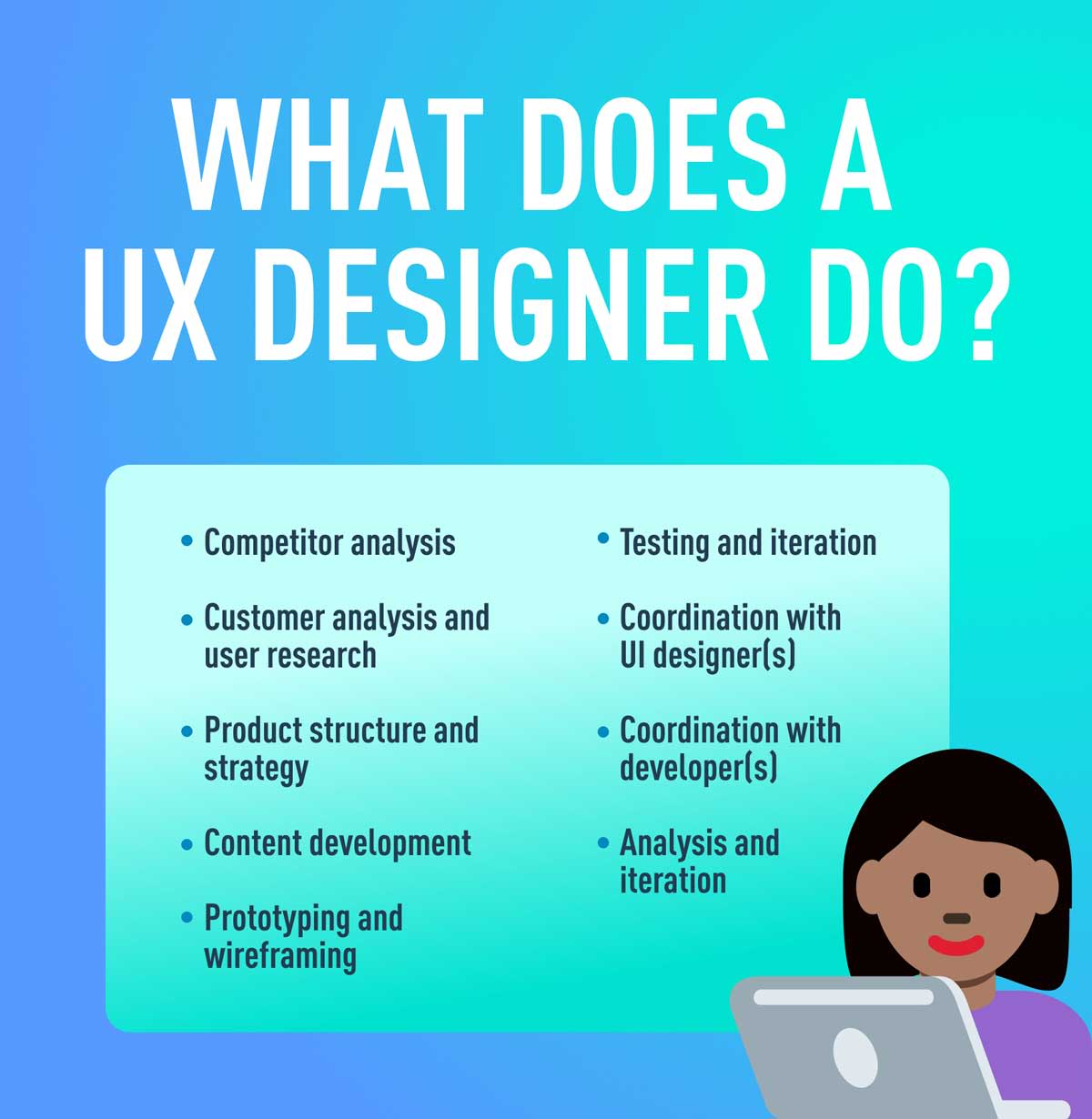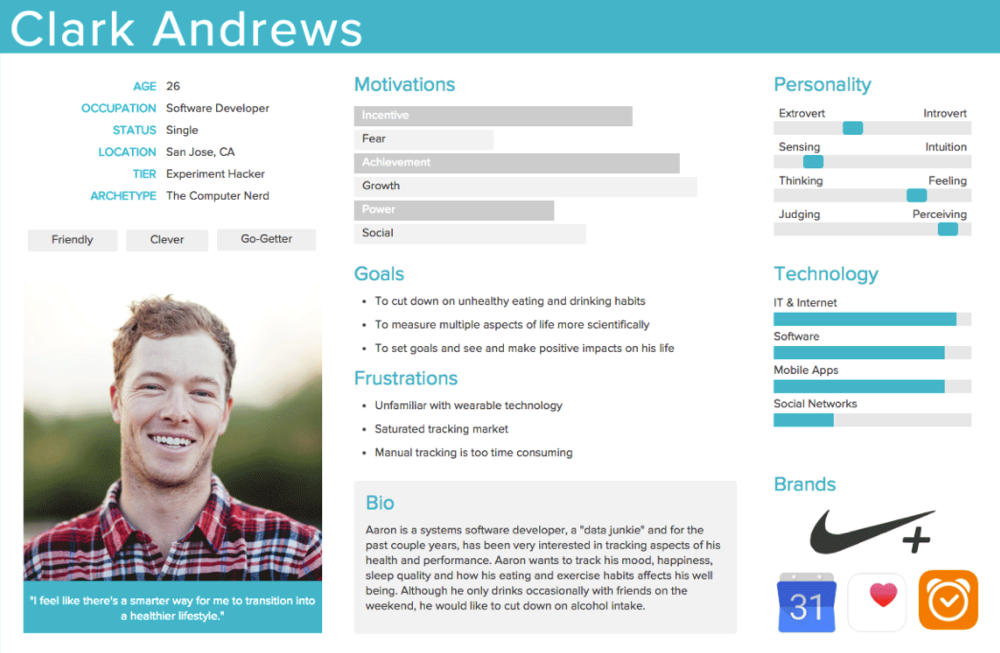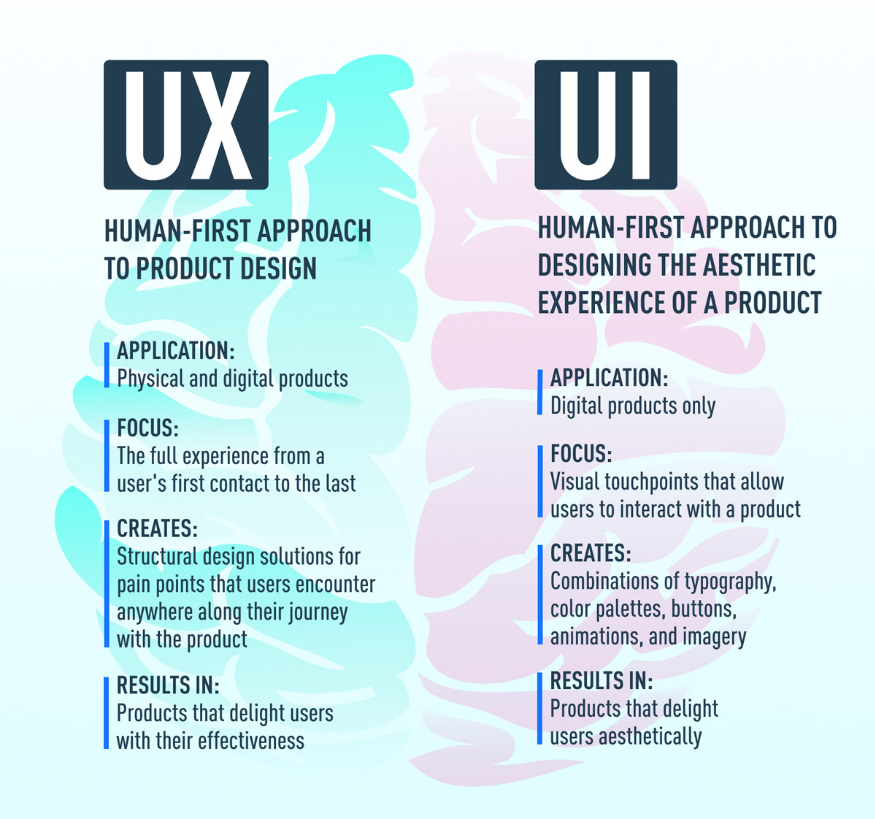What Does A UX Designer Do?
Working in a large organization with over 100+ employees? Discover how Dovetail can scale your ability to keep the customer at the center of every decision. Contact sales.
User experience (UX) design is how designers create products that provide positive, helpful, and meaningful experiences to people.
Whenever someone interacts with a product or service, they experience it as a user. UX impacts how we feel about products, how we use them, and whether or not we can complete tasks or solve problems.
UX design relates to all facets of design, including research, branding, usability, and functionality. It’s behind nearly every product we use, so UX is an essential design aspect.
User experience architect Don Norman coined the term “UX design” in 1990 while working for Apple. He used “UX” to describe all aspects of a user's experience with products, with the goal of creating seamless user journeys.
Everyday UX design
Every time you use an app, scroll through a website, or complete a task online, it’s likely that a UX designer has carefully crafted your experience. Whether your interaction with the product is satisfying or agonizing comes back to UX design.
While UX design is strongly associated with digital products and services, designers also create physical spaces and events with a user-centric approach.
Some examples of everyday UX design include:
A food box company that saves your payment information and favorite orders for a one-click, seamless purchase.
A payment platform that makes international transfers a breeze.
A pet adoption app enabling you to discover your new furry family member in a simple and meaningful way.
An easy-to-navigate public park that’s relaxing to walk through.
Regardless of what you’re interacting with, a UX designer is probably behind that process.
What’s the role of a UX designer?
UX designers aim to produce meaningful, user-friendly products and services that efficiently perform important tasks.
To do this, UX designers play many vital roles in the design process. That’s because UX design is a broad concept relevant across all design stages. UX designers will often find themselves jumping between different disciplines––such as research, prototyping, and user testing––to create optimized products for an end user.
UX designers must work with people. Designers balance business aims while staying attuned to the user’s needs and simultaneously working with other teams to create their designs.
The main tasks of a UX designer
UX designers have varied and exciting roles. They tend to require many diverse skills to complete their key tasks.
The main tasks of a UX designer include:
User research, including creating user personas
Developing information architecture
Designing wireframes and user flows
Prototyping and user testing
Coordinating with essential teams
Optimization

User research
The UX team’s work starts when they receive a brief from their company or a client. A brief is a document outlining the project expectations and scope. It all starts with the user. To create human-centric products, understanding people is critical. That’s why the first step of UX design is undertaking rigorous user research.
The designer’s goal is to deeply understand the users they are producing an experience for. To do this, they interview current or intended users to discover their needs, pain points, and wants in a product. Designers often do this user research through focus groups or user interviews.
This stage also tends to involve creating an outline of the intended product or service, conducting background research into the relevant industry, and deep competitor analysis.
Creating user personas
User personas are helpful for UX designers because they detail the intended users for a product. Designers can use the user data they gathered from focus groups, interviews, ethnographic studies, and market segmentation to identify groups of users. With this information, they can create personas to represent these target groups in a more personal, approachable way.
User personas help designers create products with a specific person in mind rather than creating products too generally. User personas also ensure designers can truly empathize with the intended user.
A one or two-page document includes user persona information such as:
Key attributes
Motivations
Goals
Personality information

For example, a user persona might be Amanda, a 30-year-old mother who is looking for other mothers to connect with. One of her main goals is to quickly move her interactions offline and into the real world for genuine connection. Her pain point has been not knowing about scheduled events in her area.
Another user persona could be Jack, a 21-year-old who is looking to sell his used car. He wants to list his car specifications as quickly and seamlessly as possible. In the past, he has found the process of getting his car information online tedious and complicated.
The more the UX designer knows about Amanda or Jack––their needs, wants, and pain points––the better the UX designer can create meaningful and useful experiences for them.
Creating information architecture
Information architecture refers to organizing content and information within a product. UX designers aim to create cohesive, natural, and logical ways of laying out this information.
The critical aim is to ensure users can get the information they need quickly and intuitively.
Designing wireframes and user flows
Wireframes are a blueprint for intended products. These illustrations map out how the product will function, where the content will go, and a simple layout of how the product may look.
User flows are diagrams detailing how a person will move through the product or experience with various options at each step. This helps the UX designer discover any refinements they can make and gaps they can fill to ensure a seamless journey.

Prototyping and user testing
Once the designer maps out the intended process through wireframes and user flows, it’s time to create low-cost prototypes. This might mean creating something simple out of paper or creating a scaled-back version of the product.
Prototypes are enormously beneficial as they enable user testing. Users can engage with the prototypes to see how practical and simple a product is to use. This can highlight design gaps, challenges, and potential refinements before product development.
UX designers typically put prototypes through multiple rounds of testing and iterations, making adjustments as they go. This ensures the final product will fulfill the brief and delight users.
Coordinating with UI & development teams
One critical skill of UX designers is balancing the interests of multiple teams, including the needs of the business alongside the user. UX designers also work alongside UI design and development teams to bring products to life.
UI designers
People often use the terms UX design and UI design (user interface design) interchangeably. However, they are two distinct concepts.
While UI design is a critical part of UX design, UX design is a much broader concept. UI design is broken into two main categories:
Visual design relates to the look and feel of the product.
User interface design covers the functionality, interactions between elements, and ease of use of functions.

UX designers do not typically work on the visual design of a product. Instead, the UI designers create the visuals––including typography, buttons, menus, and color schemes.
In the words of web developer Dain Miller:
UI is the saddle, the stirrups, and the reins. UX is the feeling you get being able to ride the horse.
Ultimately, these two roles are critical to creating user-friendly products, and you cannot have one without the other. These two teams working closely together is essential.
Development teams
There’s a misconception that UX design involves coding. UX designers do not code; rather, developers create code to build digital products.
UX designers work alongside development teams to ensure their designs are created as intended for the end user.
Optimization
A critical but sometimes overlooked step of UX design is the need for continual improvements, especially to digital products.
Once products launch, the UX designer’s role is not over. UX designers will continue to assess how users interact with the product to make progressive changes over time in a process called optimization.
How to become a UX designer
UX designers possess key skills. These include an understanding of design, psychology, user research, and product development.
What degree should a UX designer have?
While some courses can help, there’s no one specific path to becoming a UX designer, and a specific degree is not necessarily required.
Some helpful degrees and courses include:
UX and web design
Human-computer interaction
Information technology
Information architecture
Keep in mind that many of those currently in the UX industry did not have specific experience before they began. A survey found that 65% of UX designers started their careers in general design before specifically moving into UX design.
Work experience within the industry can be a good access point for becoming a UX designer.
How much do UX designers earn?
Salaries vary by country and company, but UX designers can typically expect high salaries.
According to Glassdoor, the average annual salary for a UX designer in the US is $110,392.
What are the job opportunities?
UX designers are currently in high demand. In 2020, LinkedIn ranked UX design as one of the top 10 hard skills companies need. CNN also predicts that growth for UX designers will expand by 13% by 2027.
This is partly due to the growth of digital products that COVID-19 is driving. With more people working, interacting, and schooling remotely, digital transformation has significantly sped up. To match this digital evolution, companies have a growing need for UX designers.
A broad range of sectors need UX designers, including:
Technology
Advertising and marketing
Government sites
Big data
Manufacturing
E-learning
Internet of Things
UX design can be an exciting, fast-paced, and diverse career path. With a range of job opportunities across many industries, it’s a career with many promising opportunities.
Should you be using a customer insights hub?
Do you want to discover previous user research faster?
Do you share your user research findings with others?
Do you analyze user research data?
Editor’s picks
Last updated: 24 June 2023
Last updated: 29 May 2023
Last updated: 6 March 2025
Last updated: 6 March 2025
Last updated: 27 November 2024
Last updated: 18 December 2024
Last updated: 16 February 2025
Last updated: 22 December 2024
Last updated: 31 January 2025
Last updated: 1 February 2025
Last updated: 8 January 2025
Last updated: 26 February 2025
Last updated: 1 February 2025
Last updated: 26 February 2025
Last updated: 31 January 2025
Latest articles
Last updated: 6 March 2025
Last updated: 6 March 2025
Last updated: 26 February 2025
Last updated: 26 February 2025
Last updated: 16 February 2025
Last updated: 1 February 2025
Last updated: 1 February 2025
Last updated: 31 January 2025
Last updated: 31 January 2025
Last updated: 8 January 2025
Last updated: 22 December 2024
Last updated: 18 December 2024
Last updated: 27 November 2024
Last updated: 24 June 2023
Last updated: 29 May 2023